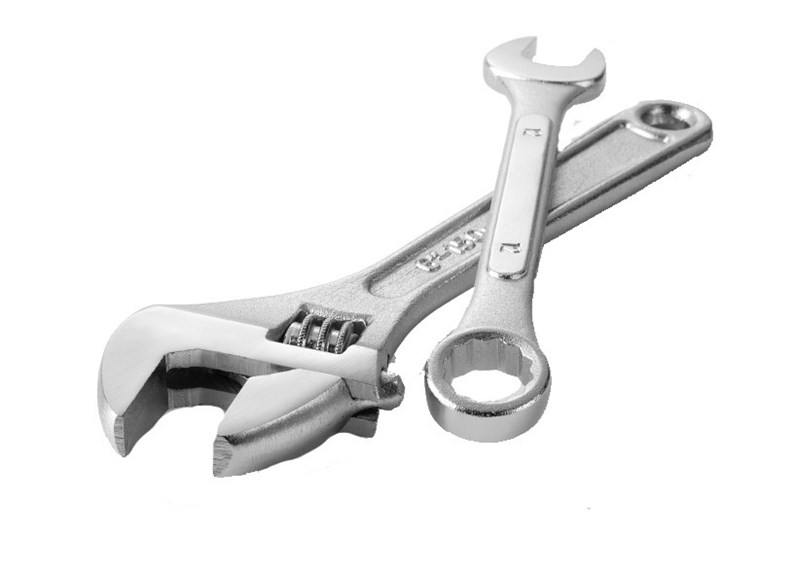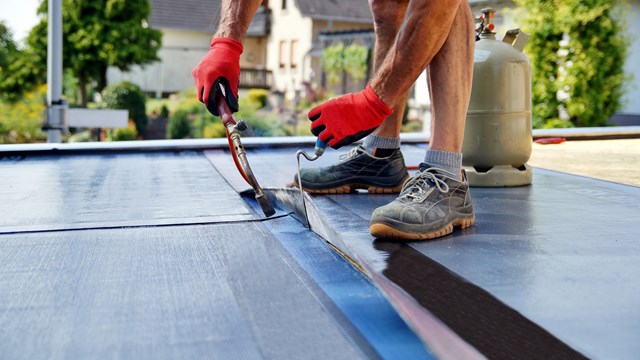Everyone knows the old phrase about April showers bringing May flowers, but what the saying doesn't tell you is that the rain in April can also bring a lot of damage to your gutter system. Hard rain and blustery wind are always around once spring hits the air in New Jersey, and that weather can play havoc with the drainage requirements of any condo or co-op development.
"Basically gutters divert water to one location," says Evan Glaser of Gutter Master in Jackson. "They prevent all the volume of water from the roof from dispersing at the foundation, which causes obvious erosion problems."
Gutters are not only an important element of any rooftop; they are a necessity and should not be treated lightly. Improper drainage due to poor pitch is one of the biggest causes of roof drainage problems. Such improper drainage causes water to accumulate in certain spots in the gutters. This ultimately builds up debris and accelerates rusting. Clogged gutters and downspouts can also lead to big problems.
"Gutters are designed to bring the water from the roof to a central location and then disperse it at ground level, where the gutter terminates," says Ken Harvey of Storm Master in East Brunswick. "They can affect the integrity of a foundation if they are not working properly."
The Gut of the Matter
Problems arise quickly when the downspouts are damaged, bent, or cracked or there is space between the flashings (formed metal that's installed at roofing joints or intersections to prevent moisture from penetrating) and the roof.
"It's not hard to see when your gutters are in trouble, but a lot of people won't do anything about it until it's too late," says Harvey. "I've seen gutters that look like they won't last another day—often it's just not a top priority for people, but it should be."
The life expectancy of a typical aluminum gutter is 20 to 25 years if it is properly maintained during that time span.
"The aluminum can become pitted, or deteriorate during the course of its lifetime, especially if the gutters aren't properly maintained or cleaned," Glaser says. "That causes water to leak out of the bottom of the gutters."
Once that happens, it can cause major puddles or leak into walls and may cause major damage to any plantings, paving, or—worst of all—the building foundation itself.
Don't Leaf it Alone
Because many people don't get their gutters cleaned as often as they should, the leaves that have fallen from trees over the course of fall and winter often accumulate in the gutters, causing blockages and other big problems, like mold and algae growth.
"Leaving leaves in gutters makes them unable to drain properly and causes water to run over the top of the gutter," says Glaser. "That can cause them to rot over time if the problem isn't taken care of."
"No one wants to see leaves, debris or anything in their gutters," says Katherine Rizza of Skydell Contracting in Bound Brook, "It looks bad and can affect the value of a home."
A number of products exist to help minimize leaf blockage and help homeowners and association maintenance staff keep their property's gutters clear in between professional cleanings. One such product is called Leaf Defier, and essentially works by eliminating the empty space in the gutter that's so prone to leaf blockage. The device is an open-cell polyurethane insert, specially shaped and cut to fit snugly into the gutter. The material is ultra-porous, so even during a downpour, rainwater flows through the Leaf Defier into the gutter valley and out the downspout, and leaves just slide right off the surface or blow away. On top of all that, the spongy material is treated with a chemical biocide and fungicide to inhibit the growth of mold, mildew, fungus, and moss in your gutters.
Many of the newer products and devices even offer long warranties against damage.
"Maintenance is key," Harvey says. "There are products you can cover your gutter with that come with a maintenance-free, no-clog warranty."
One such product is Gutter Helmet, which is a solid piece of metal installed over the existing gutter and up under the shingles, acting as a sort of mini-roof for the gutter.
"It just keeps out leaves, debris, things like that," says Rizza. "It sits forward a little bit past the gutter opening so pine needles and things like have a hard time getting in, though water can still get out easily."
"For condos, this eliminates simple maintenance," Rizza continues. "You don't need to hire someone to go up and clean the gutters every year. It also helps with ice accumulations and things like that."
The only maintenance required is to spray the nose of the gutter (or the lip) to fight off pollen, air pollution and dirt, although Rizza says they have had customers for 13 years who have never had to spray. Even so, she recommends doing it once a year—and the company will even provide free nozzles.
Another product that is used a great deal by gutter professionals is the Leaf Release Protection System, which when installed, also eliminates the need to clean out gutters regularly. It also comes with a 20-year, no-clog warranty.
"The price for this is around $6 a foot for installation," Glaser says. "It's an investment that a condo association will see pay for itself in about four years, because of the cleaning costs being eliminated."
Sounds good, but a lot of the homeowner associations aren't going for one of these systems simply because they aren't budgeted for such a large job to be done in one fell swoop. For those developments, a piece-by-piece approach may be more palatable.
"I have worked in some communities where we've done just a few buildings at a time," Glaser says, "so it can be done over stages which may be better for them."
Staying on Top of Things
Generally, the professionals are in agreement that erring on the side of redundancy is the best policy when it comes to following a gutter cleaning and maintenance program. A proper maintenance program is just as important for the top of your building as the rest, and boards and associations need to keep this in mind. Glaser recommends that gutters be cleaned at least twice a year to avoid the problems mentioned above, like rotting, leaking, clogging, rusting, and more.
"They should be cleaned in early May and again in December once all the leaves have fallen from the trees," says Glaser. While many homeowners follow this advice, there are just as many that opt to only do them once a year, which means they can be paying the price down the line.
The Pro Knows
Of course, if you can afford to hire a professional, your gutters will practically be guaranteed a long, useful life. So what's involved in a professional gutter-care house call?
"A gutter visit involves removing leaves, and checking to make sure the gutters are properly pitched. Rescuing them if needed," Glaser says. "You may find that gutters need to be replaced."
One surprisingly common reason why gutters need to be replaced is because they were improperly installed when the unit was built. Both Glaser and Harvey have seen their share of those jobs.
"They were just not done correctly and over the course of time, if they didn't have proper pitch and water has just been sitting in them, they will deteriorate much quicker than the 20 years they should last," Harvey says. "Gutter replacement is something that shouldn't be put off if needed."
Homeowners aren't required to maintain their own gutters, as that task usually falls under the associations' responsibilities. It's up to the association board and management to hire the right company for their water drainage needs.
"Usually, there is a property management company that oversees the community's needs," Glaser says. "If there is a property manager, they'll get bids for gutter maintenance and gutter replacement if that's necessary. They present everything at their board meeting and the people on the committee will make the decision."
Whatever your association's procedure, it's important to go with a licensed company—and since the maintenance work most likely isn't going to cost an arm and a leg, your property manager should find someone with plenty of experience.
For those times when a full gutter replacement is necessary, prices generally reflect the square footage of the building or buildings, with some other factors playing a role as well.
"The pitch of a roof, how many stories the building is and shape, all play a factor," says Glaser. "Generally, you're looking at a price of $2.25 to $3 a foot. The size of the gutter makes a big difference in the price too."
Many condos have large roofs and they have a standard five-inch gutter to accommodate their drainage needs. If they are at the stage where they are getting a replacement gutter, Glaser recommends going with the next size up.
"If an existing building has a standard five-inch gutter, they should know that a six-inch gutter can handle 40 percent more water volume than the five-inch. A lot of these associations when they do change their gutters are going with a six-inch now," he says. "That's always a good thing."
What it all comes down to is that with proper installation and a small investment in their maintenance, your board and management team can get their heads out of the gutters and attend to other important business.
Keith Loria is a freelance writer and a frequent contributor to The New Jersey Cooperator.







Leave a Comment